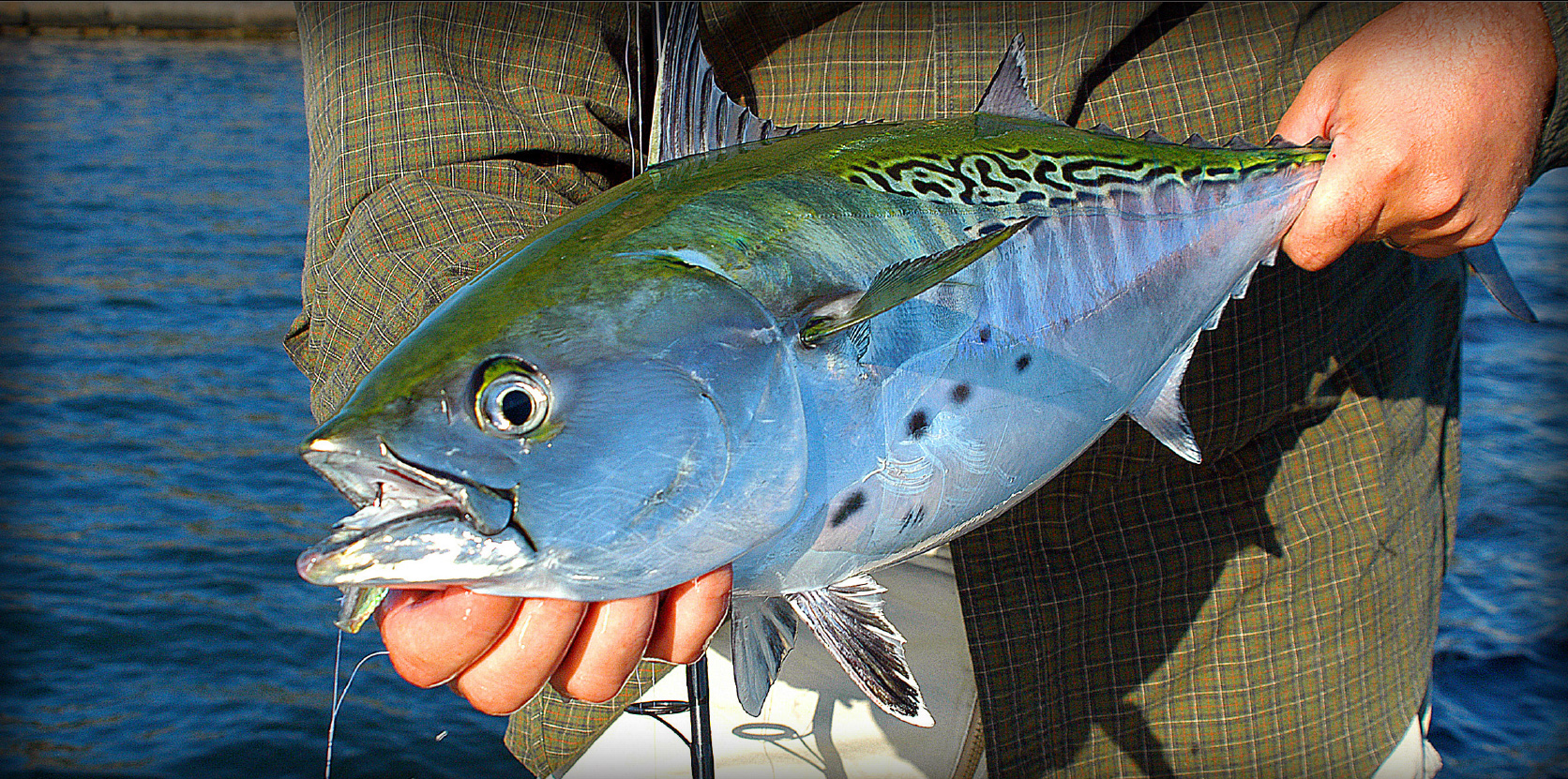
The false albacore goes by many names. Little tunny, fat albert, bonito, football, spotted bonito. But whatever anglers call it, the species is prized for its blistering runs and sheer power. The smallest member of the Scombridae family, the false albacore is not a “true” tuna and is, in fact, more closely related to the mackerels. The species’ streamlined body, powerful tail, and pelagic lifestyle make it pound-for-pound one of the most powerful game fish a fly fisher can hook into.
And they’re feasting in local waters right now. If you’re a fly or light-tackle fisherman you already know it. But even if you don’t fish, you can enjoy the drama that an albie feeding frenzy can bring to your day at any moment. False albacore can often be found wherever baitfish congregate, in inlets, around jetties, and sandbars. Like other fish that feed in schools, false albacore will drive bait to the surface or into shore in order to concentrate the food.
Like most tunas, albies lack a swim bladder, which means they must be in constant motion, which explains their phenomenal swimming power. They are fast-growing, but short lived, reaching sexual maturity at one year of age and 15 inches but rarely living more than five years. Spawning occurs in deep, offshore waters from April through November. The flesh of the false albacore is dark and coarse in texture, so few people in the U.S. eat it.
We thought you’d want to know what’s going on around you, so check out this great video: https://vimeo.com/71295782